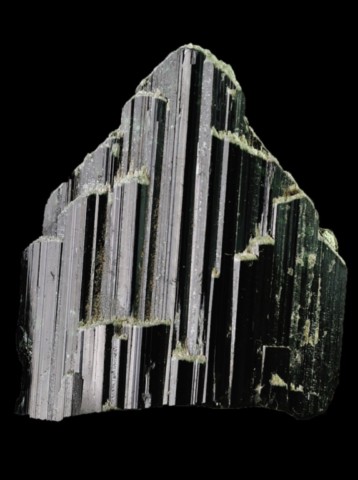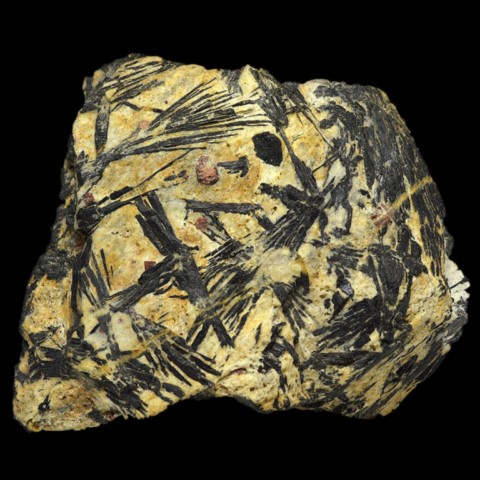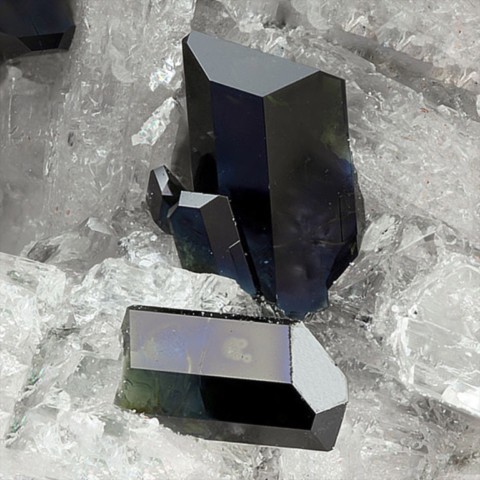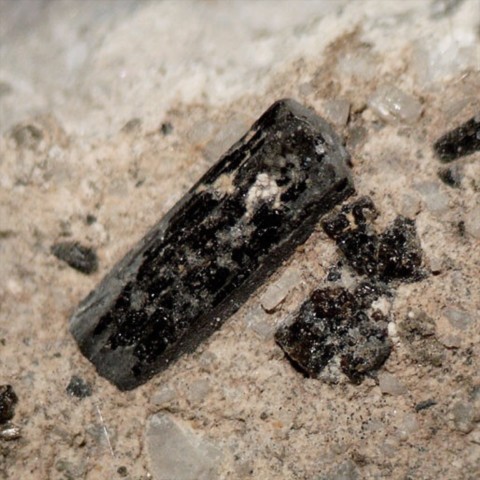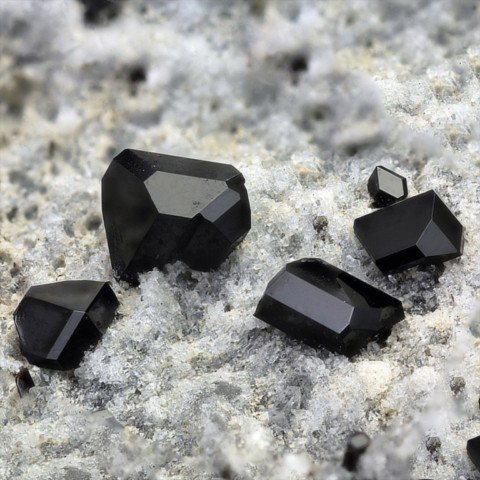 Hornblende - Encyclopedia
Hornblende - Encyclopedia
Class : Silicates
Subclass : Inosilicates
Crystal system : Monoclinic
Chemistry : (Ca,Na)2(Fe2+,Mg2+,Fe3+,Al3+)5(Si7Al)O22 (OH,F)2
Rarity : Very common
Hornblende was long considered the most common amphibole, present in magmatic rocks (syenites, granodiorites, diorites, gabbros) and metamorphic rocks (amphibolites, metabasalts). But hornblende covered such a wide range of composition that it was divided into several species of well-defined compositions (edenite, ferro-edenite, pargasite, hastingsite, tschermakite, kaersutite, etc...), the name hornblende being retained but restricted to a mineralogical subgroup comprising the ferro-hornblende - magnesio-hornblende series. “Basaltic hornblende”, common in volcanic rocks, refers to brown-black hornblendes rich in titanium (up to 4%): most often it is ferrohornblende or kaersutite. The precise identification of the preceding minerals, however, requires efficient analytical means, combining X-ray diffraction and microprobe analyses. This great complexity comes from the fact that the composition of hornblende derives from the tremolite - ferroactinote series by multiple replacements : Na in A and M4 sites, significant substitution of Si by Al in T sites and presence of Mn, Fe3+ and Ti4+ in Y sites (M1, M2 and M3), as well as the variable content of OH and F. Its name derives from German mining terms : horn (horn) evoking the elongated shape of the crystals or their high resistance and blende (sphalerite) for its resemblance to this mineral. A second etymology is proposed : horn (horn) and blenden (to blind, dazzle) because this dark green, shiny mineral, apparently promising and associated with ores, turned out to be disappointing due to its lack of economic value. Hornblende occurs in prismatic crystals, often elongated or stocky with a hexagonal section, rarely doubly-terminated, with frequently rounded edges. It is also common in masses or aggregates that are more or less fibrous to bacillary, sometimes grainy. The color is green to green-black, brown or black.
Main photo : Magnesio-hornblende from Traversella Mine, Piedmont, Italy © Fulvio Malfatto
Hornblende in the World
Magnesio-hornblende : It is known in 5 cm crystals in the amphibolite of Town Farm Road (Connecticut) and in Franklin (New Jersey). Dark green crystals measuring 2 cm were discovered in 2012 at the Traversella mine (Italy) and perfect millimeter crystals are known at the Montenero quarry (Italy).
Ferro-hornblende : In France, ferro-hornblende is found in St-Nabor and Framont near Molsheim (Bas-Rhin), it is also described in Casteil (Pyrénées-Orientales) and in the alluvium of the Loire.
Magnesio-hornblende : In France, it is found in several localities in the Brioude sector (Haute-Loire), in Champagnat-le-Jeune (Puy-de-Dôme) and in the gabbros of Château-Lambert (Haute-Saône)
Twinning
No twin known for this mineral species.
Fakes and treatments
No fakes recorded for this mineral species.
Hardness : 5 to 6
Density : 3.12 to 3.3
Fracture : Irregular
Streak : Grey-green to grey-white
TP : Translucent to opaque
RI : 1.616 to 1.712
Birefringence : 0.014 to 0.020
Optical character : Biaxial -
Pleochroism : Visible
Fluorescence : None
Solubility : Insoluble
Magnetism : NoneRadioactivity : None

